By Winsor Mcoay
Publisher: Taschen
Edited by Alexander Braun
Hardcover, clothbound, 2 volumes., 13.5 x 17.3 in., 708 pages
The Book: Meet Little Nemo, a diminutive hero of comic narrative, but one of the greatest dream voyagers of the 20th century. The master creation of Winsor McCay (1869–1934), restless sleeper Nemo inspired generations of artists with his weekly adventures from bed to Slumberland, a realm of colorful companions, psychedelic scenery, and thrilling escapades.
Winsor McCay’s Little Nemo in Slumberland ran from 1905 to 1926, alternately appearing in the New York Herald and the New York American and the strip’s creator was a founding figure in the modern US entertainment industry, above all with his revolutionary comics, which set standards for panel layout and storytelling technique, timing and pacing, and architectural and other detail that left an inestimable influence on subsequent artists, including Robert Crumb and Federico Fellini.
Accompanying the collection is Winsor McCay: A Life of Imaginative Genius by Alexander Braun, has received numerous accolades and scholarships, and his work has appeared in several exhibitions. Alongside his independent artistic activities, he studied art history in Bochum and Berlin (his 1998 doctorate thesis was on the work of the American installation artist Robert Gober). Over the past two decades, Braun has compiled one of the most extensive collections on the history of comics. Since 2008, he has curated several museum exhibits on this topic, including a comprehensive retrospective on the work of Winsor McCay in 2012/2013. In 2011, he founded the German Academy of Comic Art.
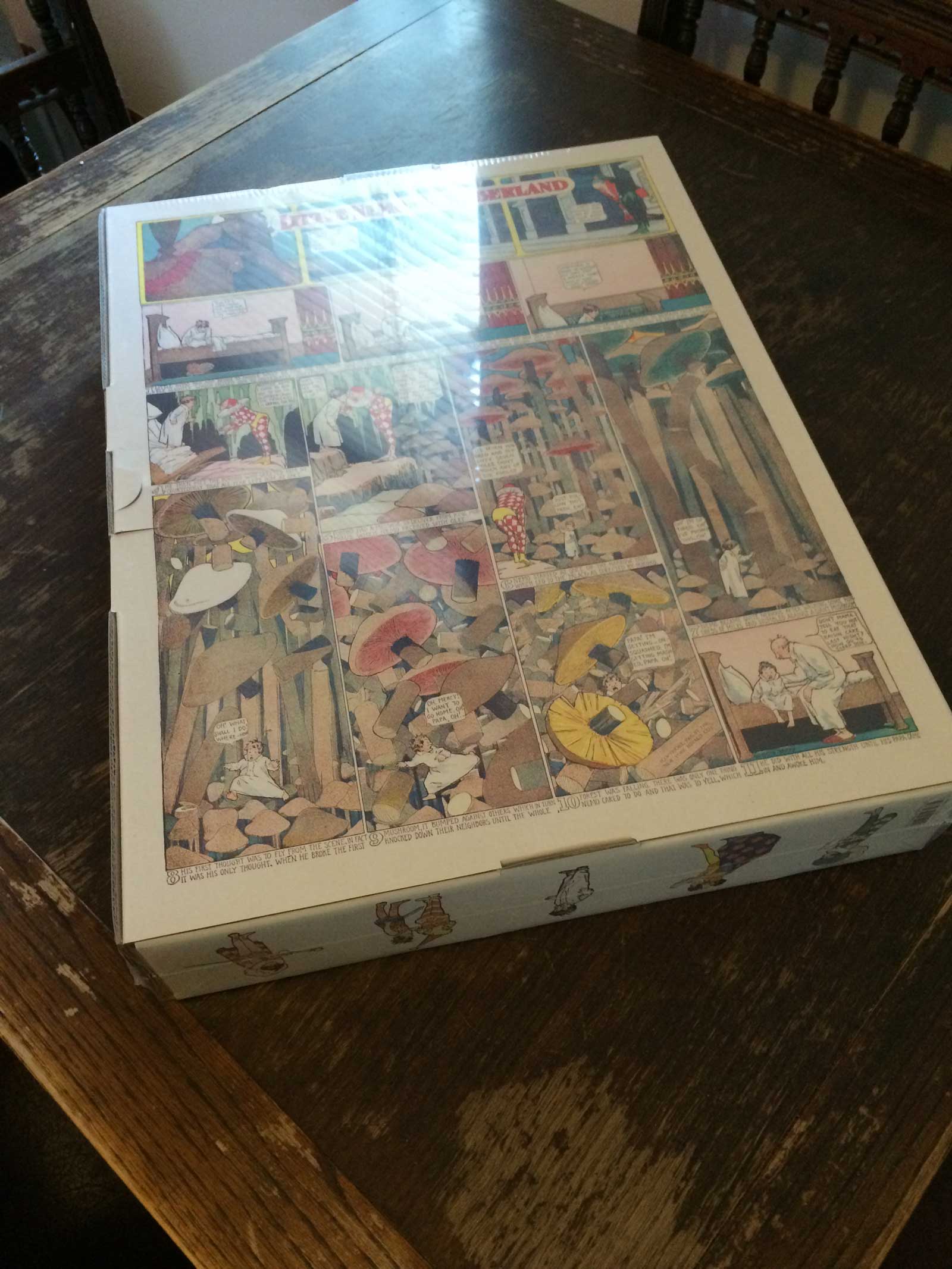
Weighing at around eight kilos, you might find this Little Nemo collection a little hard to handle – but trust me, it’s worth it!
The Review: There have been many attempts to publish Winsor McCay’s masterpiece, Little Nemo in Slumberland – but in terms of completeness, I’d argue that none before have been as impressive or as beautifully put together as the massive two-volume edition recently published by Taschen.
Little Nemo in Slumberland was first published in The New York Herald from 1905 to 1911, followed by a run in the New York American-Examiner (retitled “In the Land of Wonderful Dreams” because of copyright issues) in the 1911-1914. It returned to The New York Herald (with its original title) from 1924 to 1927, McCay assigned to other strip work during World War One, noted in the collection’s fascinating accompanying study of McCay’s life and work, Winsor McCay: A Life of Imaginative Genius.
Winsor McCay: The Complete Little Nemo 1905–1927 collects, for the very first time in one edition, in full colour, all 549 episodes of the American run of Little Nemo, presented in a huge format to show the strips as they first appeared, at broadsheet size. The dark, mind-bending nature of the Alice in Wonderland-type story of the strip aside for a moment, I have to say that some minor gripes aside the quality of reproduction given the source material is impressive – especially when you consider how little original McCay art exists and when it is offered for sale, it fetches premium prices.
(Earlier this year, a page from Little Nemo in Slumberland published in August 1907 sold at auction for €50,000 at Sothebys in a bande dessine auction, and a page from one of his other, earlier strips, Jungle Imps, is being offered for $38,500 on eBay).

Original art from Little Nemo in Slumberland, sold at auction for €50,000 by Sothebys earlier this year.
It’s thus no wonder there are some pages with folds and other minor blemishes in this collection, but in no way would I say, for a fan of McCay’s work, that these detract from enjoying the chance to read the Nemo in one place, surely the raison d’etre of a project that took nearly five years to complete. To bemoan such minor problems seems churlish.
As for the the strips themselves, telling the bizarre tale of a young boy in The Land of Wonderful Dreams… well, it’s hard not to be aware of the fact that when you read these tales, many comic creators regard McCay as perhaps the greatest cartoonist of all time, and this Sunday newspaper strip as his most enduring creation.
While Nemo is awoken from often disturbing slumber as the result, his parents and relatives reveal, of eating the wrong thing too close to bedtime, his dreams perhaps half-remembered, his unfolding story is surely a hard one to forget for his readers, and one can only wonder what the original readers, caught up in the tale, made of his many and strange adventures. The strip is well deserving of the passion it’s prompted from comic creators worldwide such as Mark Buckingham, John Cassaday, P. Craig Russell and Bill Sienkiewicz, just some of the artists who contributed to Little Nemo: Dream Another Dream, a Kickstarter-backed tribute, a project from Andrew Carl, Editor-in-Chief at Locust Moon press, who regards the strip as one of the most inventive and visually stunning works of American art.
(And he isn’t alone in his estimation, because his project was backed by Little Nemo fans to the tune of $125,000).
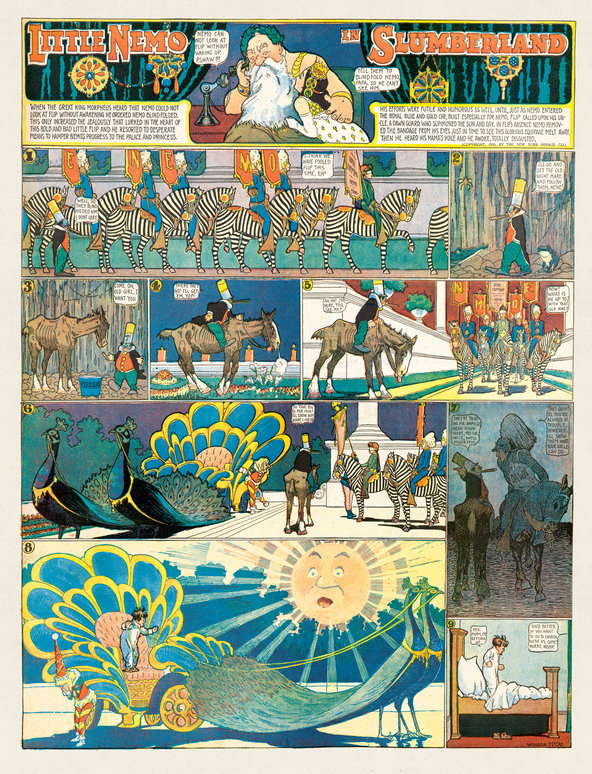
A page from Little Nemo from 1906, which is one of RAW co-founder and New Yorker art editor Françoise Mouly’s favourites.
While plotting and dialogue are not McCay’s strongest points, leaving some admirers cold (and also noting the strip’s contemporary prejudices, not at all assuaged by the story being set in a dreamland), the Art Noveau-influenced strip and McCay’s stunning draughtsmanship and inventive page design are the elements for which Little Nemo is best remembered and for what, rightfully, this glorious collection should be admired.
Having read other reviews of this Taschen project, some commentators noting their preference for previous collections such as that by the Sunday Press, I think I’d still have to come out in favour of this one, and score it highly for its completeness and presentation of a strip rightfully seen as a sequential masterpiece. But what really makes the package irresistible – despite the price! – is, for me, the inclsion of the commentary, Winsor McCay: A Life of Imaginative Genius, by art historian and comics expert Alexander Braun, which has taken me some time to read.
Braun’s detailed and thought-provoking essay, accompanied by a wealth of visual material, not only places Winsor McCay’s life and work within the cultural history of the US media and entertainment industry, but also explores the immense art historical value of McCay’s dream narrative. It outlines why McCay’s work deserves its lasting legacy (for all the delight other contemporary strips such as George Herriman’s Krazy Kat afford) and in particular, offers some valuable insights in just how important comic strip was in terms of newspapers’ Unique Selling Point, something perhaps not recognised today by publishers on both sides of the Atlantic.
Despite the cost of this collection, I’d say that if you’re looking for the full Little Nemo, warts and all, then this Taschen collection is ideal. It’s a deserving testament to McCay’s work that a publisher has published this welcome collection, and done a terrific job, too.
• It’s been noted that one strip missing from this collection but this doesn’t detract from Winsor McCay: The Complete Little Nemo 1905–1927 being the complete US run of the strip. In an Amazon review, Diego Cordoba notes that for some reason, the strip published on 7th January 1906 strip was done twice, with one version appeared in US newspapers, and another with the exact same date, but with different art, appearing in the European version of the New York Herald published in Paris, France (the predecessor of today’s International Herald-Tribune).
• Taschen has a page devoted to its Little Nemo book here
• If you’re a fan of Little Nemo, you may be interested in the animated film, Little Nemo: Adventures in Slumberland, available only as a Region One encoded DVD, released in 1989; and the critically-acclaimed IDW comic book by Eric Shanower and Gabriel Rodriguez, Little Nemo: Return to Slumberland, due for release in both hardcover and paperback collections next month (June 2015)
• Little Nemo: Dream Another Dream is available direct from Locust Moon, price $124.99. In a 144-page, 16″ x 21″ hardcover, many of the world’s finest cartoonists and illustrators have created new Little Nemo in Slumberland strips, following their own voices down paths lit by McCay
• Winsor McCay developed an interest in the then fledgling medium of animation and partnered with J. Stuart Blackton – another animation pioneer, to create a short film based on his comics in 1911, and there’s a review of it here on Ink and Pixel
• Françoise Mouly, the co-founder of RAW and art editor of the New Yorker, fell in love with Winsor McCay’s classic comic strips, in more ways than one. In 2012, she was interviewed about the Sunday Press collection of Little Nemo and offers some fascinating insights into the strip and its creator
• There’s a fantastic article comparing the appeal of Krazy Kat and Little Nemo here on Sequart by Julian Darius
More Reviews
“You can make the argument that the comic strip started with Winsor McCay. Chronologically, it’s not quite true but, more than most, the American cartoonist who created Little Sammy Sneeze, Dream of the Rarebit Fiend and, in 1905, Little Nemo in Slumberland sketched out what was possible in the form. He is the comic strip’s Cecil B DeMille and George Melies combined – a glorious fantasist and technical innovator, a synthesiser of possibilities in an almost new art form and now, more than 100 years later, still one of the most accomplished and capable artists who have ever graced the form.”
– Teddy Jameison, The Scottish Herald
“McCay plays with the fledgling conventions of comic art itself, stretching and warping panels horizontally and vertically to accommodate giants or expansive cities; he portrays widescreen vistas in the days when motion pictures were a new art. He even gets meta long before critics invented the term: characters occasionally “tear” the paper they’re drawn on; in one strip Nemo and friends bemoan the fact the artist hasn’t drawn them any food and start eating the title letters.”
“L’édition de Taschen ne se limite pas à une meilleure reproduction des planches originales. Le contexte culturel, politique et social des bandes dessinées de Winsor McCay est aussi longuement détaillé. Dans ses rêves, Nemo est à la recherche de la Princesse mais il est le pur produit de son époque. Pour Alexander Braun qui coordonne cette édition, «le monde de McCay est exclusivement blanc et bourgeois». Par exemple, Impie, le «primitif» est un petit sauvage directement sorti des minstrel shows. Cet aspect presque raciste du contexte de Little Nemo aurait mérité d’être plus détaillé car si Impie est un personnage gentil et amusant, il serait inimaginable aujourd’hui.”
“McCay was an exceedingly talented cartoonist. He had an imaginative Art Nouveau technique that enabled him to combine stunning images, architectural marvels and vivid colors. His great precision to detail could be witnessed in every scene, building, animal or fantasy character and contraption he dreamed up for Slumberland. With only a few exceptions (Johnny Gruelle, R.F. Outcault, Lyonel Feininger), no other cartoonist of McCay’s era matched up to his artistic skill set.”
– Michael Taube, The Washington Times
The founder of downthetubes, which he established in 1998. John works as a comics and magazine editor, writer, and on promotional work for the Lakes International Comic Art Festival. He is currently editor of Star Trek Explorer, published by Titan – his third tour of duty on the title originally titled Star Trek Magazine.
Working in British comics publishing since the 1980s, his credits include editor of titles such as Doctor Who Magazine, Babylon 5 Magazine, and more. He also edited the comics anthology STRIP Magazine and edited several audio comics for ROK Comics. He has also edited several comic collections, including volumes of “Charley’s War” and “Dan Dare”.
He’s the writer of “Pilgrim: Secrets and Lies” for B7 Comics; “Crucible”, a creator-owned project with 2000AD artist Smuzz; and “Death Duty” and “Skow Dogs” with Dave Hailwood.
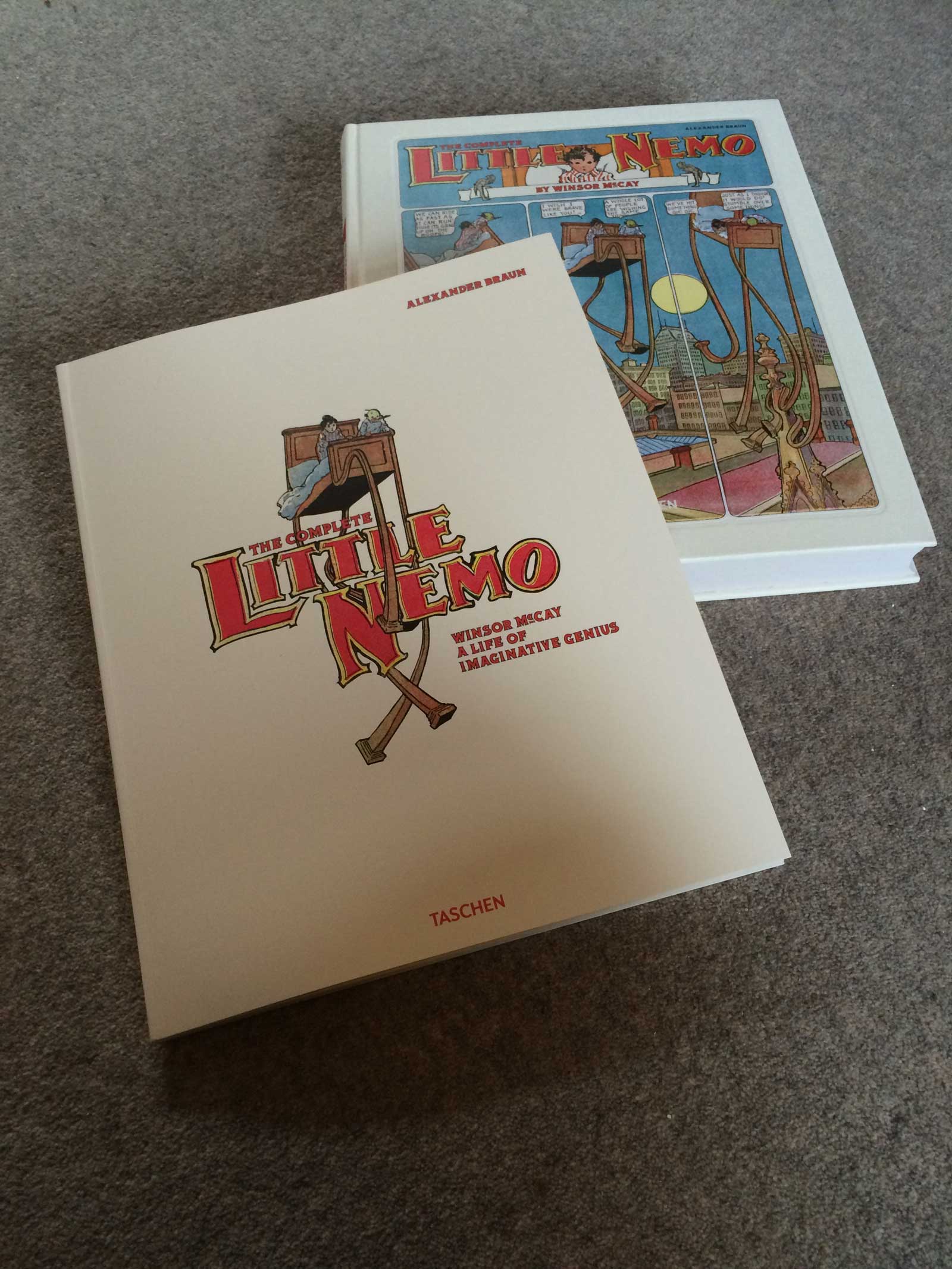
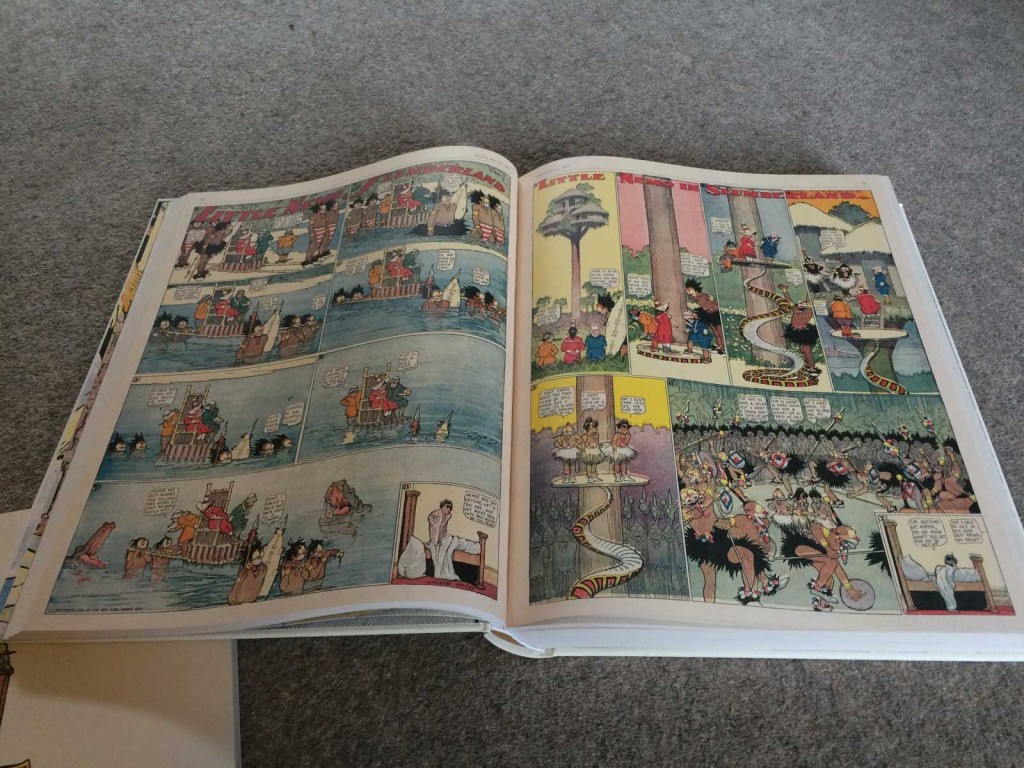
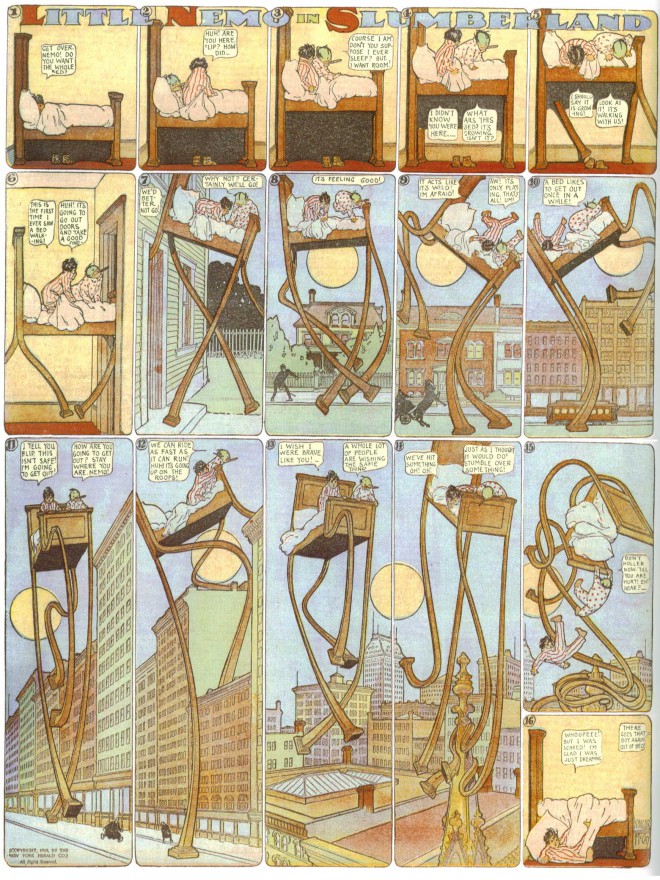
 In Review: Torpedo 1936 to Torpedo 1972
In Review: Torpedo 1936 to Torpedo 1972  In Review: Hawkeye Kate Bishop: Team Spirit
In Review: Hawkeye Kate Bishop: Team Spirit  In Review: Madame Web
In Review: Madame Web  In Review: Venom Volume Two – Deviation
In Review: Venom Volume Two – Deviation